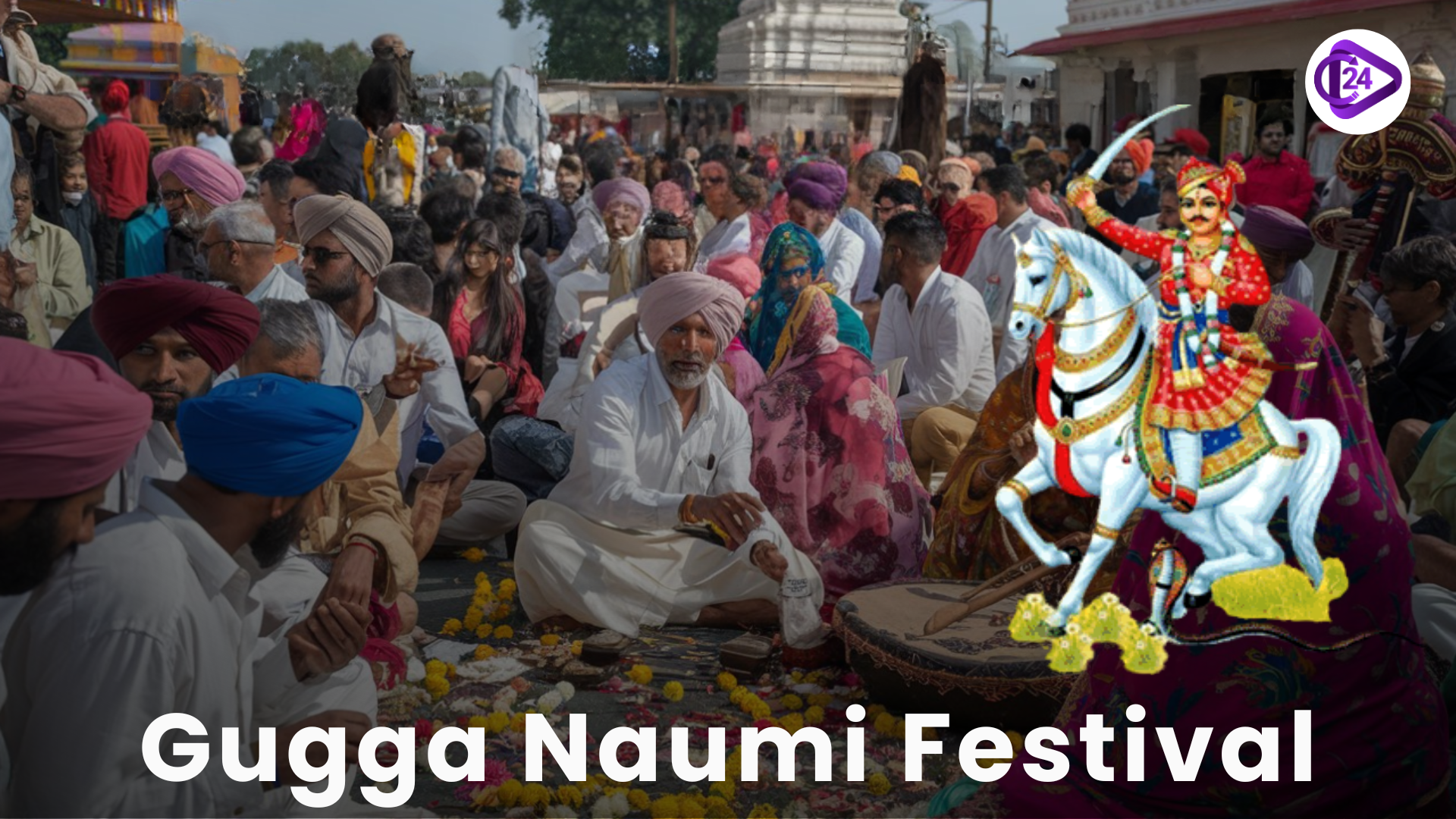
Gugga Naumi is a folk -religious fair held mostly in Rajasthan, Haryana, Punjab, Jammu & Kashmir and Uttar Pradesh. Devoted to Gugga Pir, a folk deity of the Chauhan Rajputs, they believe that he will protect his followers against snakebites, and that he brings fertility, health, and prosperity. The festival is celebrated on the ninth of Krishna Paksha during the month of Bhadrapad which normally starts around Raksha Bandhan. Festivals, Gugga Medi, entry of Hanumangarh, Rajasthan, have some major fairs, rituals and processions. It has a syncretic nature in the sense that it involves both the Hindus and the Muslims, which makes it socially and culturally valuable.
Context
-
It is witnessed between Raksha Bandhan and Krishna Paksha Navami of Bhadrapad month each year.
-
Worship centres: Gugga Medi, Hanumangarh, in Rajasthan.
-
Famous as a festival of snake worship, folk religion and unity.
Key Details
Date & Observance
-
A day before Purnima of Bhadrapad month (Janmashtami).
-
It starts on the day of Raksha Bandhan and carries on to one week.
Major Celebrations
-
Visits to the village of Gugga Medi (Hanumangarh, Rajasthan).
-
The standard of Gugga Pir is a Garuda (snake charmer).
-
Pir ke Sole types of devotional songs are sung.
-
Faires, rites and propitiation that were maintained at Gugga shrines (Marhis).
About Gugga pir
-
Gugga, Guggapir or Gugga Zahir Pir or Guaji.
-
Rajput of the Chauhan Chauhan also called Agni vamsa clan of princes.
-
It is shown on a blue horse with blue & yellow flags.
-
Had powers over poisonous snakes.
Worshipped for:
-
Snakebites prevention.
-
Children’s well-being.
-
Healing powers.
Conclusion
Gugga Naumi is a cultural and not only a religious practice that provides the symbolism of the unity and the diversity of rural India. It reinforces bonds between the community, and maintains centuries old customs of worshiping snakes and folklore. This festival also gives prominence to the composite cultural ethos of India, by crossing religious lines.



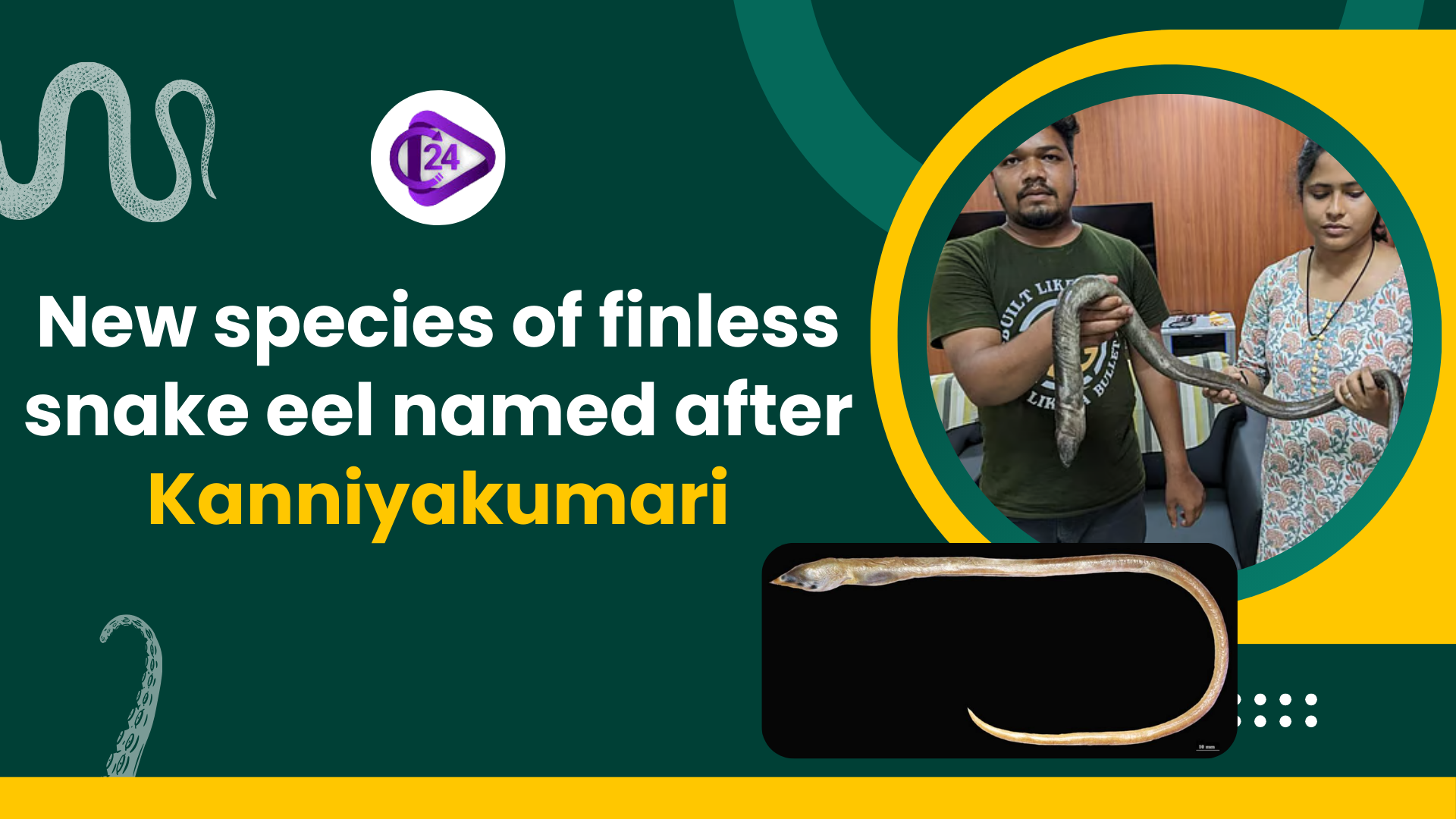 New Finless Snake Eel Species Apterichtus kanniyakumari Discovered off Tamil Nadu Coast
New Finless Snake Eel Species Apterichtus kanniyakumari Discovered off Tamil Nadu Coast 71st National Film Awards 2025: Shah Rukh, Rani & Arijit Singh Shine
71st National Film Awards 2025: Shah Rukh, Rani & Arijit Singh Shine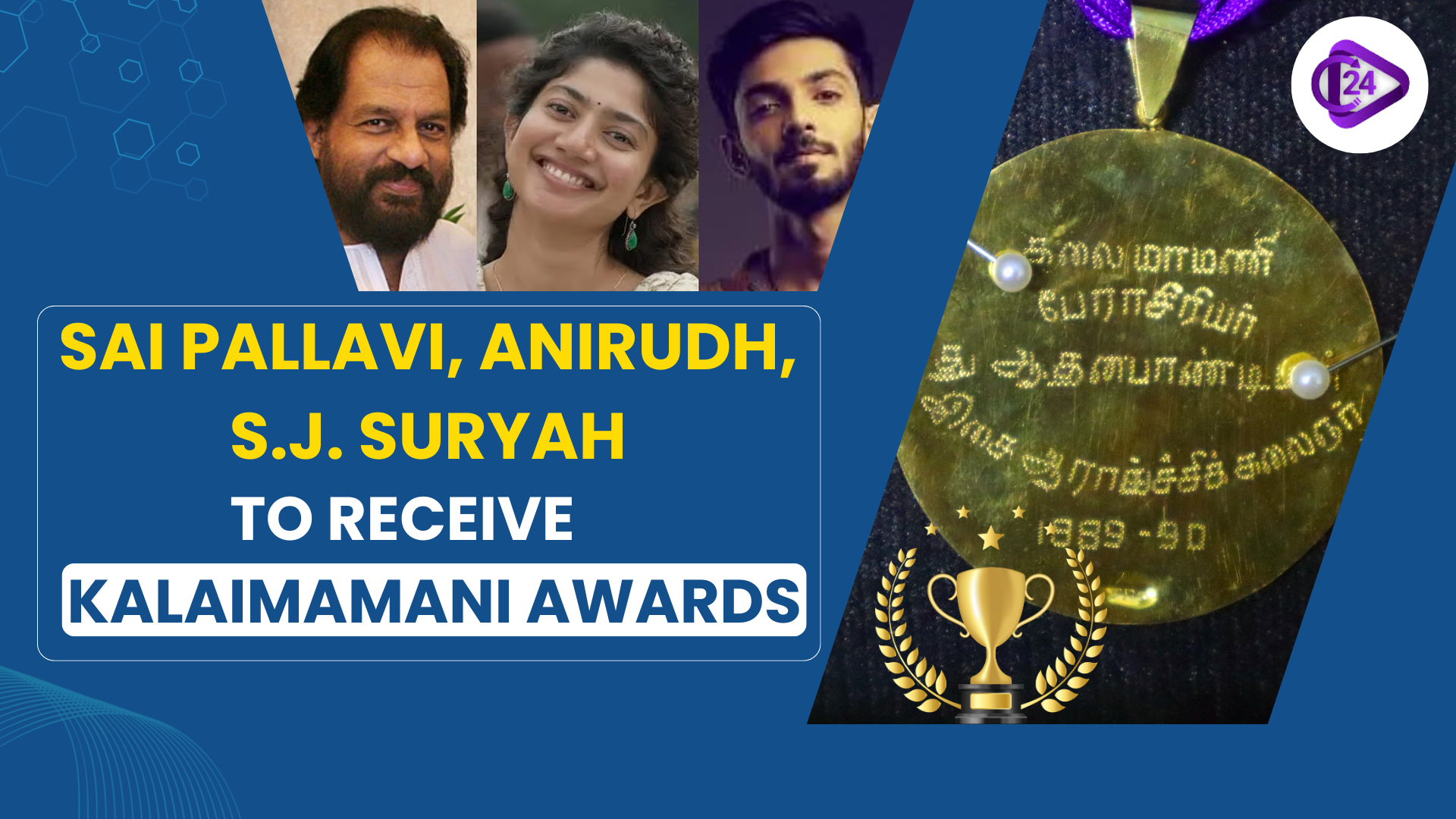 Sai Pallavi, Anirudh, S.J. Suryah to Receive Kalaimamani Awards
Sai Pallavi, Anirudh, S.J. Suryah to Receive Kalaimamani Awards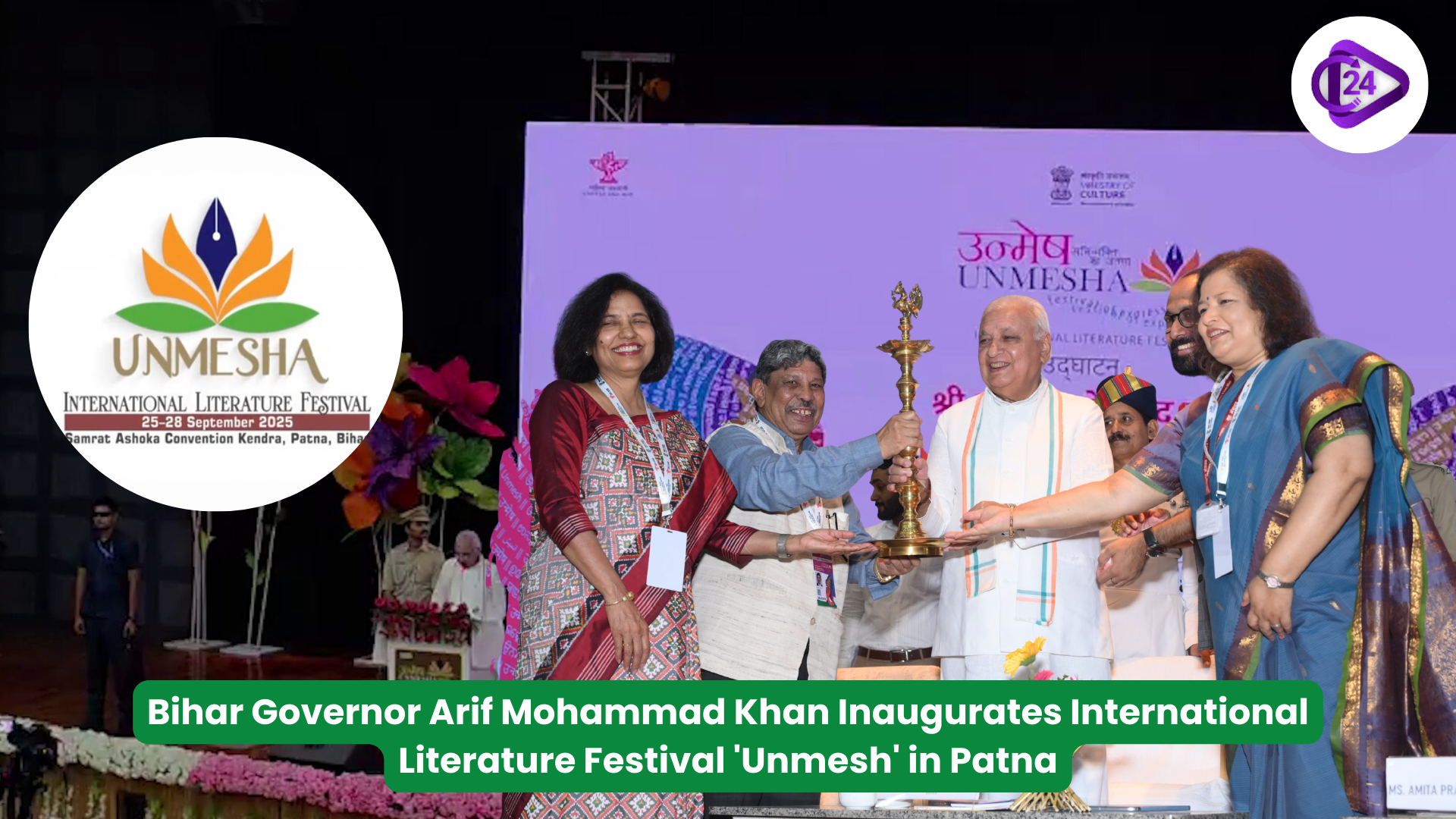 Bihar Governor Arif Mohammad Khan Inaugurates International Literature Festival 'Unmesh' in Patna
Bihar Governor Arif Mohammad Khan Inaugurates International Literature Festival 'Unmesh' in Patna Why Bihar Congress is Protesting the Adani Project: A Breakdown
Why Bihar Congress is Protesting the Adani Project: A Breakdown Education Ministry to Hold Virtual Buildathon Contest for Students from Classes 6 to 12
Education Ministry to Hold Virtual Buildathon Contest for Students from Classes 6 to 12 System for Pension Administration – Raksha (SPARSH)
System for Pension Administration – Raksha (SPARSH)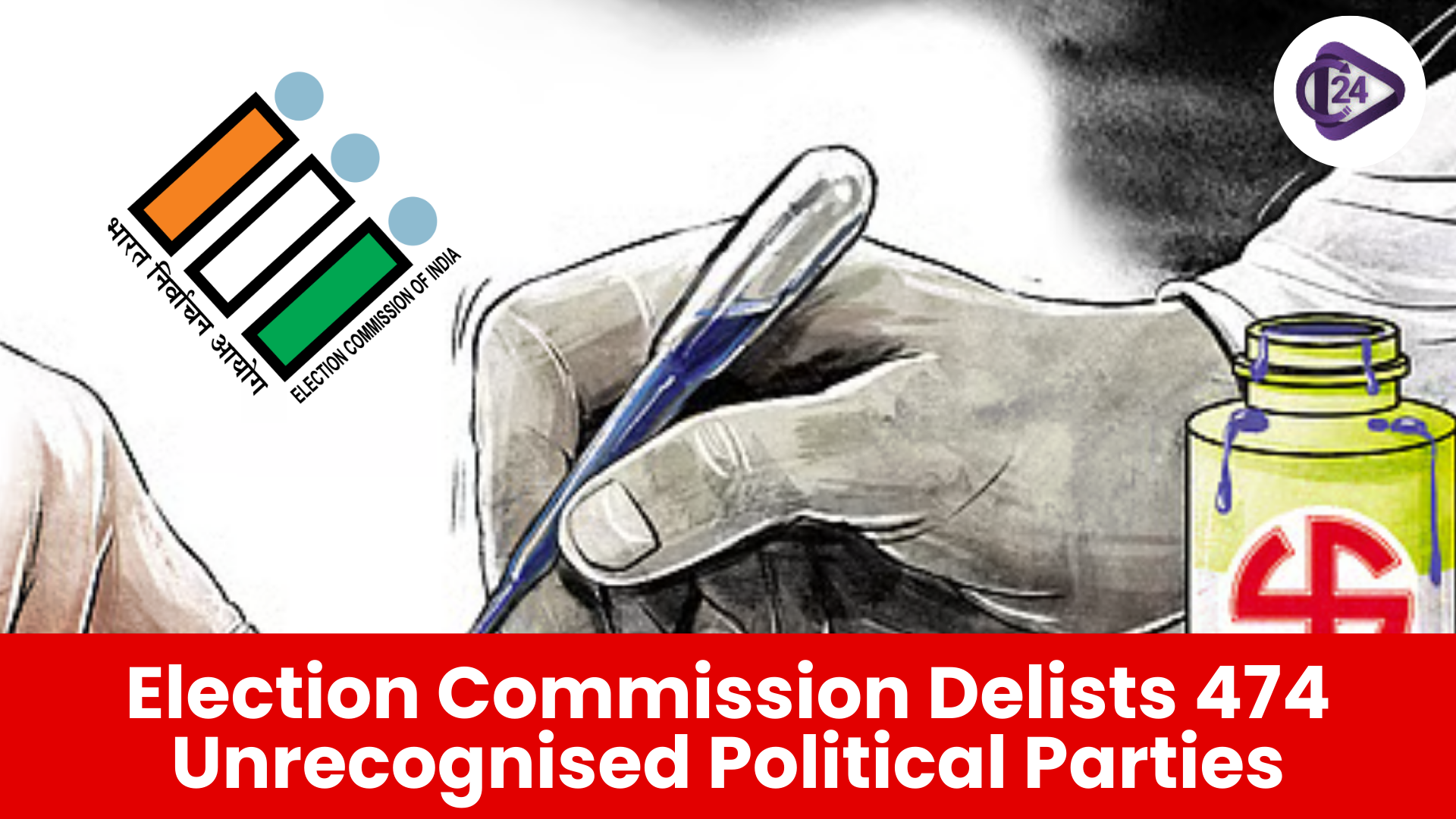 Election Commission Delists 474 Unrecognised Political Parties
Election Commission Delists 474 Unrecognised Political Parties Clean Plant Programme: India’s Step Towards Disease-Free Horticulture
Clean Plant Programme: India’s Step Towards Disease-Free Horticulture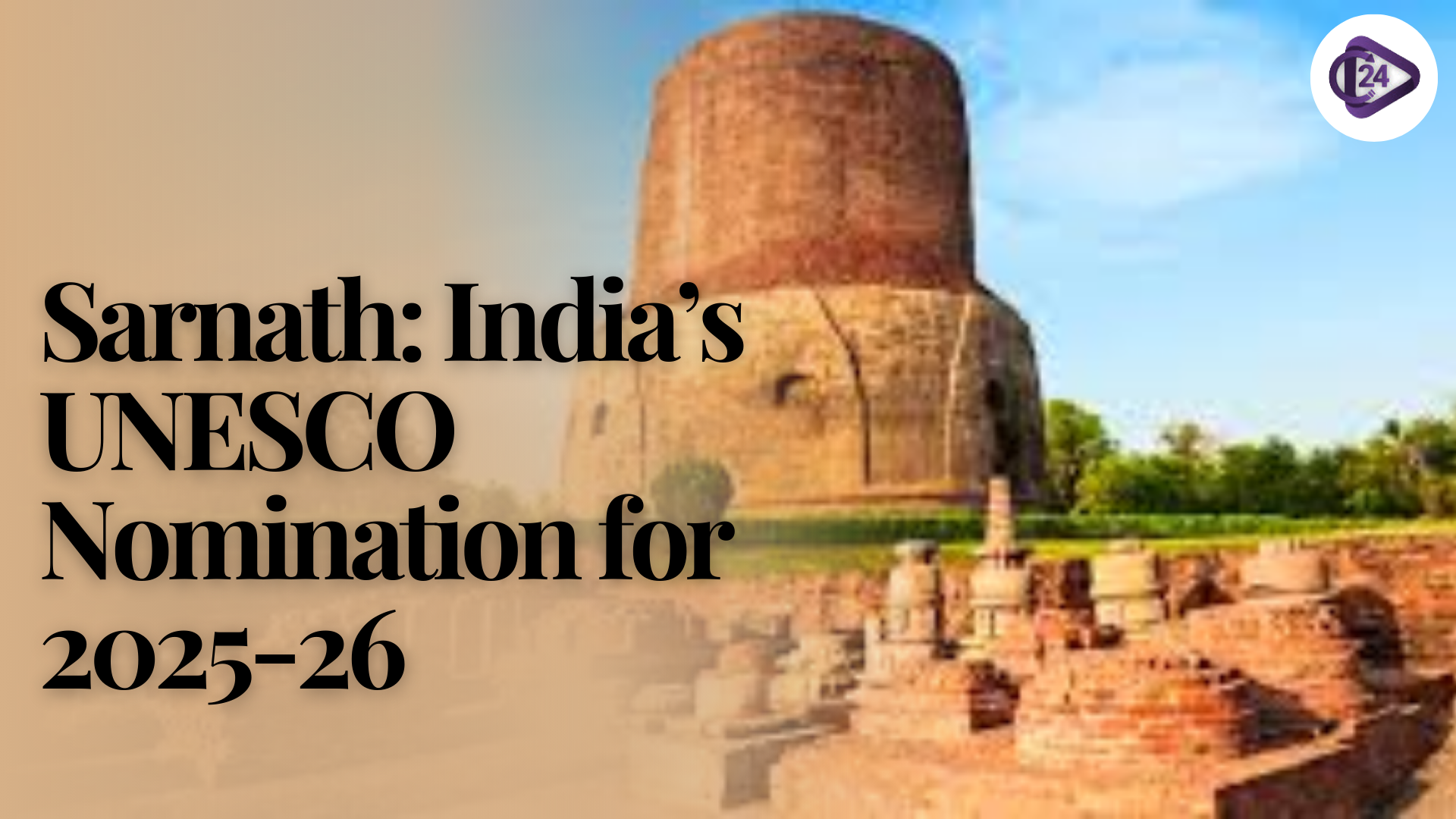 Sarnath Nominated for UNESCO World Heritage List 2025-26
Sarnath Nominated for UNESCO World Heritage List 2025-26






